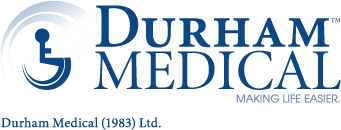A stroke is a medical emergency that occurs when blood flow to the brain is interrupted, either due to a blockage (ischemic Stroke) or bleeding (hemorrhagic Stroke). Without immediate treatment, brain cells begin to die, leading to serious complications or even death. Recognizing the early signs of a stroke can help save lives and prevent long-term disability.
Understanding the Signs of a Stroke
The key to stroke treatment is acting quickly. The FAST acronym is a widely recognized tool to help identify stroke symptoms:
- F – Face Drooping: One side of the face may droop or feel numb. Ask the person to smile; if their smile is uneven, it could be a sign of a stroke.
- A–Arm Weakness: One arm may feel weak or numb. Ask the person to raise both arms; if one drifts downward, it may indicate a stroke.
- S – Speech Difficulty: People may slur their words or have trouble speaking or understanding speech.
- T – Time to Call 911: If any of these symptoms appear, call 911 immediately—every second counts.
Other Stroke Symptoms
While the FAST acronym covers the most common warning signs, stroke symptoms can vary depending on the part of the brain affected. Additional symptoms may include:
- Sudden confusion or trouble understanding speech.
- Loss of balance or coordination, dizziness, or difficulty walking.
- Severe headache with no known cause, which can be a sign of a hemorrhagic stroke.
- Vision problems include sudden blurred or blackened vision in one or both eyes.
- Numbness or weakness in the face, arm, or leg, especially on one side of the body.
Types of Stroke
- Ischemic Stroke (most common) – Occurs when a blood clot blocks or narrows a blood vessel in the brain.
- Hemorrhagic Stroke – Caused by a burst blood vessel, leading to bleeding in the brain.
- Transient Ischemic Attack (TIA) – Also known as a mini-stroke, this is a temporary blockage that lasts only a few minutes to hours but is a serious warning sign of a future stroke.
Who Is at Risk?
Several factors increase the risk of Stroke, including:
- High blood pressure
- Diabetes
- Smoking
- Obesity
- High cholesterol
- Heart disease
- Excessive alcohol consumption
- Family history of Stroke
What to Do in Case of a Stroke
If you or someone around you shows signs of a stroke:
- Call 911 immediately – Never wait for symptoms to go away.
- Do not drive – Emergency medical services can provide life-saving care before reaching the hospital.
- Take note of when symptoms started – This helps doctors determine the best treatment options.
Preventing a Stroke
While some risk factors like age and genetics cannot be controlled, lifestyle changes can reduce stroke risk:
- Maintain a healthy diet rich in fruits, vegetables, and lean proteins.
- Exercise regularly.
- Monitor and manage blood pressure, cholesterol, and diabetes.
- Quit smoking and limit alcohol intake.
Conclusion
A stroke can happen to anyone at any time. Recognizing the signs and symptoms early and acting FAST can save lives and improve recovery. If you suspect a stroke, don’t wait—seek emergency medical help immediately.
